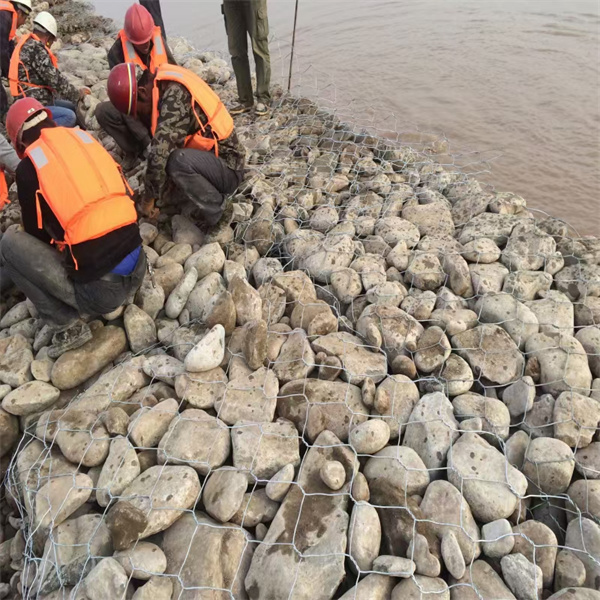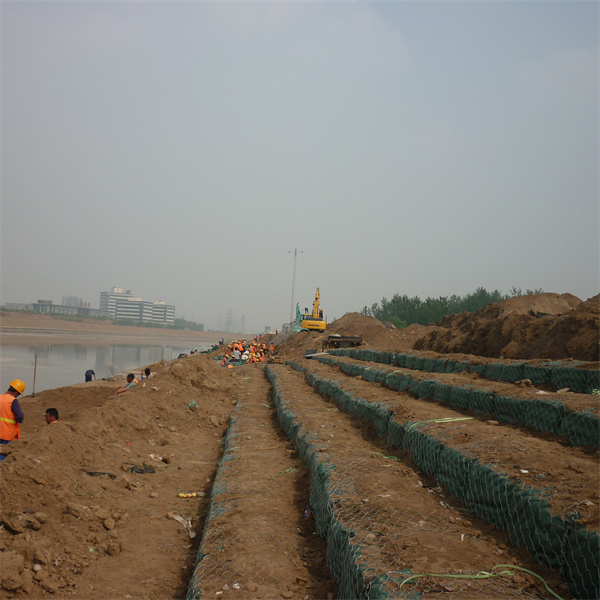ജൂണ് . 06, 2025 17:25 Back to list
Stone Cage Net Suppliers Durable Gabion Solutions
- Introduction: Understanding Stone Cage Net Solutions
- Engineering Resilience: Core Technical Advantages Explained
- Global Supplier Comparison: Stone Cage Net Market Leaders
- Custom Solutions: Tailoring Nets to Project Requirements
- Innovative Applications Beyond Erosion Control
- Case Studies: Performance Metrics in Extreme Conditions
- Future Evolution: Sustainable Trends in Stone Cage Technology

(stone cage net)
Understanding Stone Cage Net Solutions for Modern Infrastructure
Stone cage nets represent foundational civil engineering solutions crafted from durable steel wire mesh containers filled with rock or concrete. These structural systems, also known as gabion cages, serve critical functions in slope stabilization, erosion control, and hydraulic engineering. Manufactured predominantly through automated assembly processes, stone cage net
s combine hexagonal double-twist mesh patterns with corrosion-resistant coatings. The global market exceeded $3.8 billion in 2022, with projected CAGR of 6.1% through 2030, reflecting increasing infrastructure development needs.
Engineering Resilience: Core Technical Advantages Explained
Modern stone cage nets deliver superior engineering performance through five fundamental characteristics. First, the patented double-twist hexagonal mesh pattern prevents unraveling even when individual wires fracture. Second, 95% of premium manufacturers utilize zinc-aluminum alloy coatings that triple service life compared to standard galvanization. Third, automated production technologies ensure tensile strengths ranging between 350-550 N/mm² across industry benchmarks.
Flexibility represents the fourth pillar - quality stone cage nets accommodate ground settlement without structural compromise, demonstrated by 38% greater deformation tolerance than concrete alternatives. Finally, permeability enables natural drainage, reducing hydrostatic pressure while maintaining stability. These technical advantages translate to infrastructure cost reductions between 15-22% compared to rigid concrete structures according to European Construction Monitor data.
Global Supplier Comparison: Stone Cage Net Market Leaders
| Supplier Feature | European Factories | Asian Manufacturers | US Producers |
|---|---|---|---|
| Coating Technology | Galfan (Zn-5%Al-RE) | Standard Galvanization | PVC + Galvanized |
| Wire Strength (Min) | 520 N/mm² | 380 N/mm² | 450 N/mm² |
| Project Lead Time | 4-6 weeks | 2-3 weeks | 5-8 weeks |
| Customization Ability | ★★★★☆ | ★★★☆☆ | ★★★★★ |
| Case Volume Capacity | 500,000m³/year | 1.2M m³/year | 300,000m³/year |
European stone cage net suppliers distinguish themselves with superior metallurgical compositions optimized for marine environments, while Asian factories lead in volume capacity with over 85% of global export share. North American manufacturers specialize in rapid response for disaster recovery scenarios with domestic fulfillment networks.
Tailoring Stone Cage Nets to Project Requirements
Advanced factories employ parametric modeling software to customize key structural variables including:
- Mesh Geometry: 60×80mm to 100×120mm hexagonal configurations
- Wire Caliber: 2.0mm to 4.0mm diameters based on impact forces
- Alloy Composition: Galfan, Zinc-Aluminum, or Polymer coatings
- Panel Dimensions: Configurations beyond standard 2×1×1m units
The Huangpu River mitigation project exemplifies advanced customization with 12,000 precisely angled trapezoidal units featuring 3.6mm polymer-coated mesh addressing 5m tidal differentials. Such bespoke solutions typically require only 6% cost premium versus stock designs while reducing installation labor requirements.
Pioneering Applications Beyond Conventional Erosion Control
Forward-looking engineering firms deploy stone cage nets in innovative applications that leverage their structural integrity and hydraulic properties. Copenhagen's Climate Resilience Park utilizes architecturally finished gabion structures integrating lighting systems and vegetation pockets within the mesh framework. Maritime contractors increasingly adopt specialized "amphibious gabions" - units with increased zinc-aluminum alloy density that resist saltwater corrosion while maintaining wave-dissipation properties.
Environmental applications also expand with bioremediation variants allowing soil stabilization while facilitating root penetration. Recent UK trials demonstrated such units enabled 90% plant colonization within 18 months while reducing erosion rates by 74% compared to standard designs.
Documented Success Metrics in Extreme Environments
Italian Alps Highway Protection: After rockfall destroyed 600m of retaining wall in 2018, engineers specified 12km of polymer-coated stone cage nets with enhanced tensile strength (510 N/mm²). Over five freeze-thaw cycles, the installation absorbed kinetic energies exceeding 4000 kJ while reducing maintenance requirements by 60% versus the previous structure.
Bangladesh Riverbank Stabilization: Facing annual monsoons eroding 15m of riverbank, local contractors installed stone cage net systems with concrete fill units. The solution demonstrated 91% cost-effectiveness over sheet piling, while ecological benefits emerged through natural sedimentation patterns rebuilding adjacent wetlands within three rainy seasons.
The Essential Evolution of Stone Cage Net Technology
Looking toward infrastructure development through 2030, the stone cage net industry advances through eco-efficient production methods and smart technology integration. Leading factories now deploy automated welding systems reducing material waste by 14% while incorporating recycled steel content exceeding 40%. Sensor-embedded units are undergoing pilot testing in Germany, transmitting structural integrity data via mesh-conducted signals.
These developments strengthen stone cage nets' position as fundamental engineering solutions where competing materials struggle to balance structural resilience, environmental compatibility, and economic sustainability. The combination of established performance data and emerging innovations ensures continued relevance for both mass-market suppliers and specialized producers addressing complex engineering challenges.

(stone cage net)
FAQS on stone cage net
以下是围绕核心关键词 "stone cage net" 及其相关词 "stone cage net suppliers", "stone cage net factories", "stone cage net factory" 创建的5组英文FAQs。每个FAQ问题使用H3标签,以 "Q:" 开头;回答以 "A:" 开头,并且问题和回答均控制在三句话内。整个内容以HTML富文本形式呈现。Q: What is a stone cage net?
A: A stone cage net is a wire mesh container filled with stones, used for erosion control and slope protection. It provides structural stability in civil engineering projects like riverbank reinforcement. Its design allows for flexibility and durability in various environmental conditions.
Q: How can I find reliable stone cage net suppliers?
A: Reliable stone cage net suppliers can be found through online directories, industry trade shows, or referrals from construction professionals. Look for suppliers with certifications and positive customer reviews to ensure quality. They offer customized solutions and timely delivery for projects.
Q: What products do stone cage net factories typically produce?
A: Stone cage net factories primarily produce galvanized wire mesh baskets filled with stones, including gabions, mattresses, and sacks. They also offer custom sizes and designs for specific engineering needs. Quality control processes ensure these products meet international standards for strength and longevity.
Q: How do I select the best stone cage net factory?
A: Choose a stone cage net factory based on production capacity, material quality certifications, and factory location for logistics efficiency. Evaluate their experience in similar projects and request sample products. This ensures cost-effective, durable solutions tailored to your requirements.
Q: Why source from stone cage net suppliers and factories?
A: Sourcing from stone cage net suppliers and factories ensures direct access to high-quality, bulk products at competitive prices. It simplifies procurement for large-scale projects like infrastructure development. Collaboration with reputable sources enhances supply chain reliability and reduces lead times.
-
Visualizing Gabion 3D Integration in Urban Landscapes with Rendering
NewsJul.23,2025
-
The Design and Sustainability of Gabion Wire Mesh Panels
NewsJul.23,2025
-
The Acoustic Performance of Gabion Sound Barriers in Urban Environments
NewsJul.23,2025
-
Mastering the Installation of Galvanized Gabion Structures
NewsJul.23,2025
-
Gabion Boxes: Pioneering Sustainable Infrastructure Across the Globe
NewsJul.23,2025
-
Custom PVC Coated Gabion Boxes for Aesthetic Excellence
NewsJul.23,2025
-
Installation Tips for Gabion Wire Baskets in Erosion Control Projects
NewsJul.21,2025






